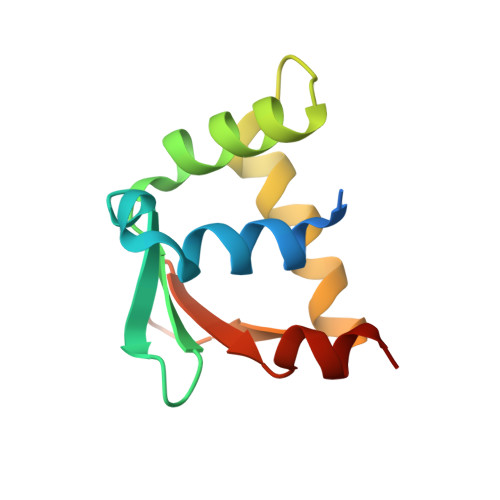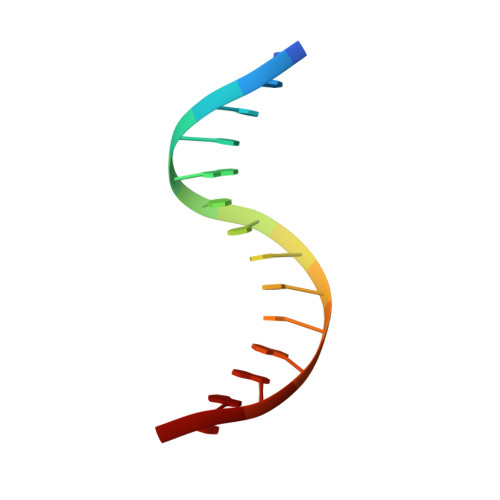Steric Mechanism of Auto-Inhibitory Regulation of Specific and Non-Specific DNA Binding by the ETS Transcriptional Repressor ETV6.
De, S., Chan, A.C., Coyne, H.J., Bhachech, N., Hermsdorf, U., Okon, M., Murphy, M.E., Graves, B.J., McIntosh, L.P.(2014) J Mol Biol 426: 1390-1406
- PubMed: 24333486
- DOI: https://doi.org/10.1016/j.jmb.2013.11.031
- Primary Citation of Related Structures:
2MD5, 4MHG - PubMed Abstract:
DNA binding by the ETS transcriptional repressor ETV6 (or TEL) is auto-inhibited ~50-fold due to an α-helix that sterically blocks its ETS domain binding interface. Using NMR spectroscopy, we demonstrate that this marginally stable helix is unfolded, and not displaced to a non-inhibitory position, when ETV6 is bound to DNA containing a consensus (5')GGAA(3') recognition site. Although significantly lower in affinity, binding to non-specific DNA is auto-inhibited ~5-fold and is also accompanied by helix unfolding. Based on NMR chemical shift perturbations, both specific and non-specific DNA are bound via the same canonical ETS domain interface. However, spectral perturbations are smaller for the non-specific complex, suggesting weaker and less well-defined interactions than in the specific complex. In parallel, the crystal structure of ETV6 bound to a specific DNA duplex was determined. The structure of this complex reveals that a non-conserved histidine residue in the ETS domain recognition helix helps establish the specificity of ETV6 for DNA-binding sites containing (5')GGAA(3')versus(5')GGAT(3'). These studies provide a unified steric mechanism for attenuating ETV6 binding to both specific and non-specific DNA and expand the repertoire of characterized auto-inhibitory strategies utilized to regulate ETS factors.
Organizational Affiliation:
Department of Biochemistry and Molecular Biology, Department of Chemistry, and Michael Smith Laboratories, University of British Columbia, Vancouver, BC, Canada V6T 1Z3.
















